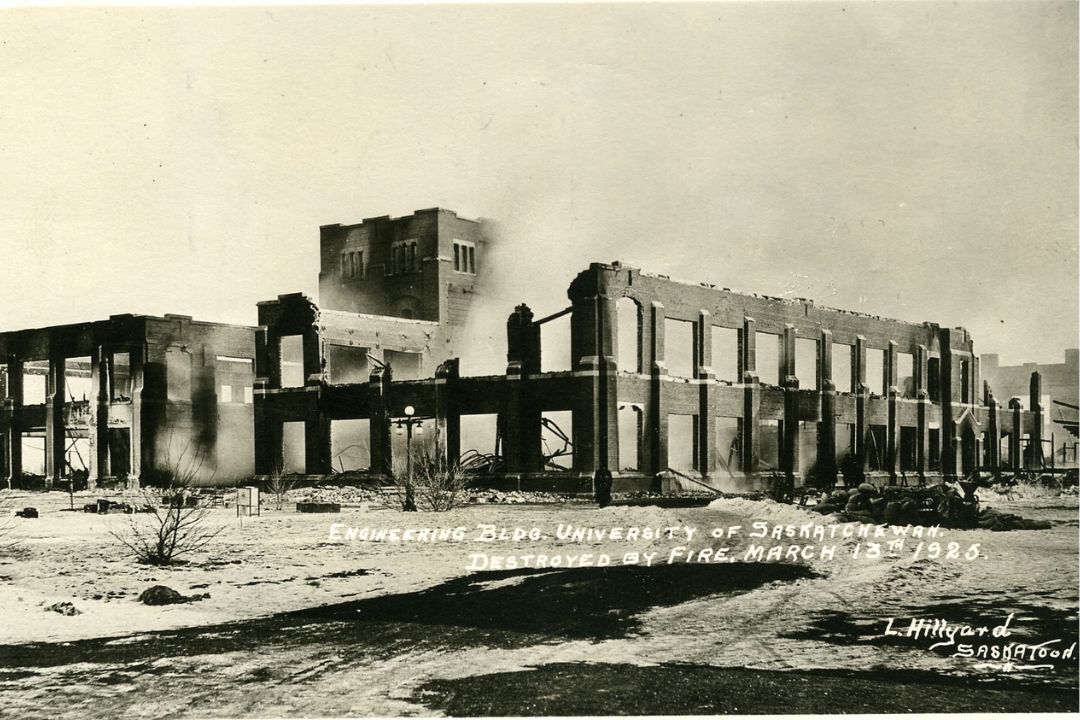
From fire to future: 100 years since the 1925 Engineering Building fire
A century after the 1925 fire that destroyed the University of Saskatchewan’s (USask) Engineering Building, the college looks to a new era of renewal, innovation, and bold transformation.
By Engineering Communications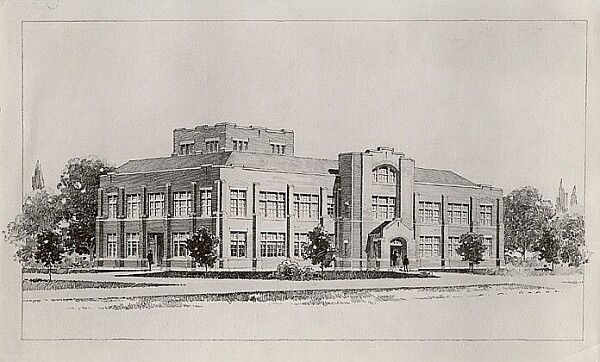
In the early morning hours of March 13, 1925, disaster struck the University of Saskatchewan’s Engineering Building. Flames erupted in the tractor laboratory (now known as the E.A. Hardy Lab) and, despite the quick response of the Saskatoon Fire Department, the building was gutted within hours. Only the ceramics laboratory remained standing, saved by fire protection doors meant to shield the rest of the building from the high heat of the kilns.
The loss of the building was staggering, surpassing a quarter of a million dollars (roughly $4.4 million dollars in 2025). The fire’s impact was felt across campus, halting other planned construction projects, including the long-anticipated Arts Building.
The original Engineering Building, designed by campus architects David Brown and Hugh Vallance, had been a cornerstone of the university since its completion in 1912. Constructed in three phases between 1910 and 1920, the redbrick building officially became the home of engineering. Its diverse spaces reflected the practical, hands-on nature of engineering education of that era, much of which was rooted in agricultural engineering. The three floors were complete with a blacksmith’s forge, light-farm equipment, wood and metalworking rooms, lecture halls, and a drafting room.
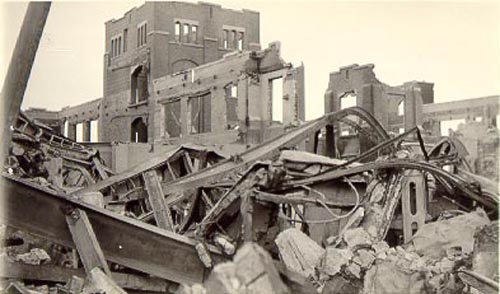
The cause of the fire has never been officially determined, but one theory is that the World War I German biplane that hung from the rafters of the tractor lab may have been the source of the blaze. Despite the devastation, the spirit of USask Engineering remained strong. By June 1925, plans were underway for a new building — one that would be built on the original foundation but with significant design changes. The building was rebuilt with reinforced concrete and tile, replacing the wooden floors and walls that likely fueled the fire. The new building, designed by local architect Gentil J.K. Verbeke, featured modern upgrades like skylights, individual lights for drafting tables, a student smoking lounge, and a dedicated library and reading room.
When the Engineering Building re-opened its doors in January 1926, it symbolized resilience and thoroughness - values that continue to shape USask engineers to this day.
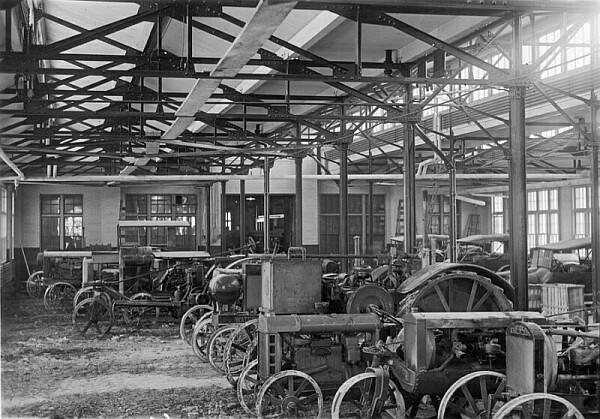
A century of growth and transformation
Over the following decades, the Engineering Building has expanded and evolved. Additions like the Evan A. Hardy Laboratory which replaced the tractor lab, was completed in 1963, and extensive renovations in the late 1970s and early 1980s kept pace with the college’s growing needs. By 2002, an extension to the building was complete and became home to the Department of Chemical and Biological Engineering.
A hundred years later, USask Engineering is embarking on a new period of renewal and transformation with the Innovation, Design, Engineering and Applied Sciences (IDEAS) Building and strategic renovations. This ambitious initiative will modernize learning spaces and create environments that foster innovation, creativity, and collaboration — ensuring that USask Engineering remains at the forefront of engineering education and research.
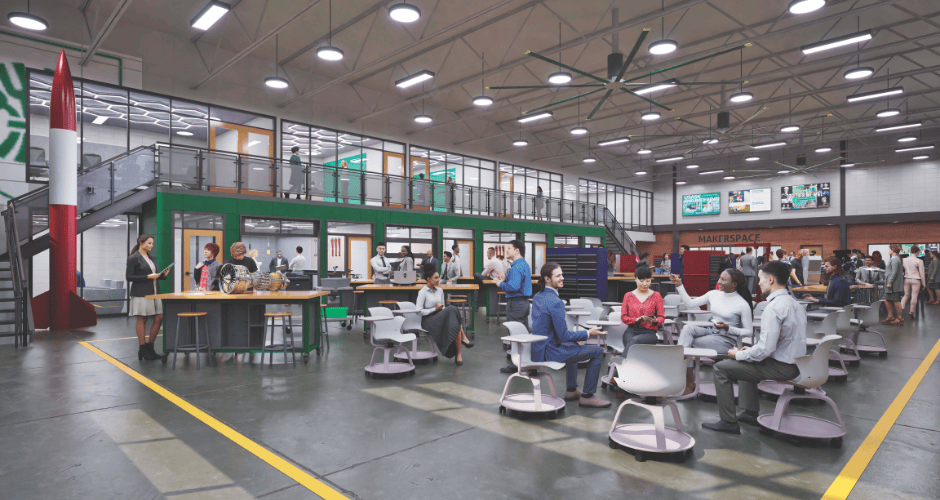
Plans for the IDEAS Building and strategic renovations will unfold in two phases. Phase One focuses on the revitalization of key spaces, including the main lecture theatre, key classrooms, and transforming the Hardy Lab into the Engineering Design Hub to create active learning spaces. Phase Two will expand the building’s current footprint, creating a dynamic gateway to engineering with multifunctional laboratories, modern classrooms, enhanced lecture theatres, and expanded service areas to foster student success, cutting-edge research, and strengthened collaborations with industry and the community. Together, these phases represent a $90-million capital project that will shape the future of USask Engineering.
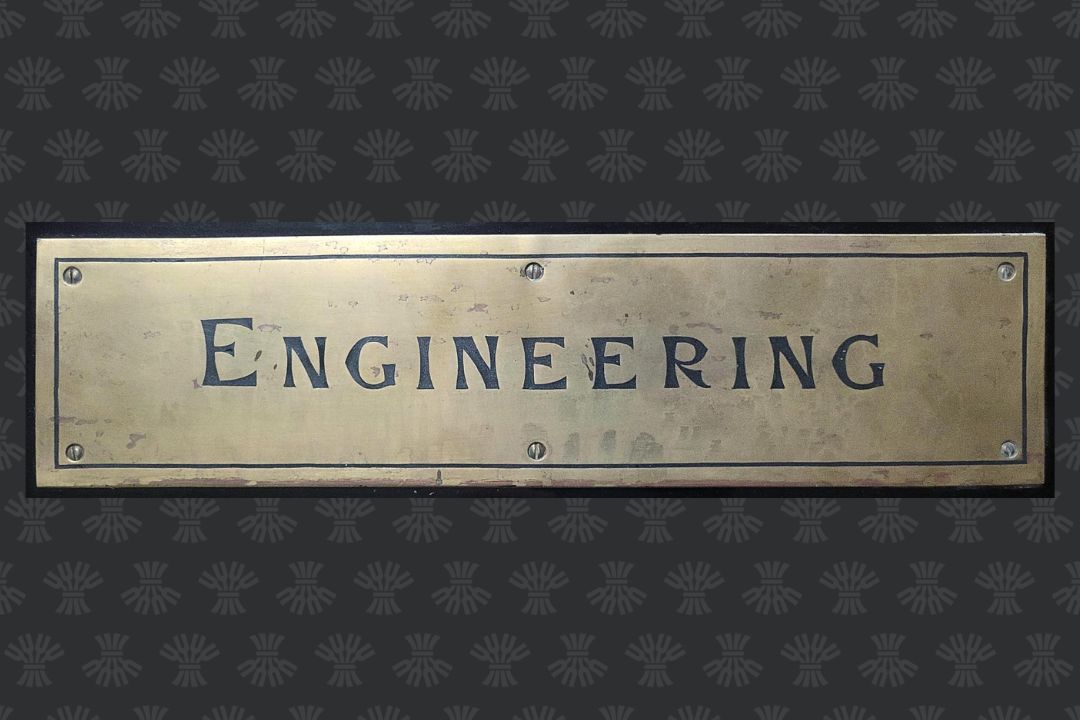
As the college looks ahead, it remains rooted in its history. The only physical artifact from the 1925 fire — a building sign — still hangs in the Dean’s Office, a reminder of the resilience that has defined USask Engineering for over a century.
As we reflect on 100 years since the 1925 fire, we honour the legacy of those who rebuilt our college’s infrastructure and look forward to a future shaped by the same spirit of determination and vision.

